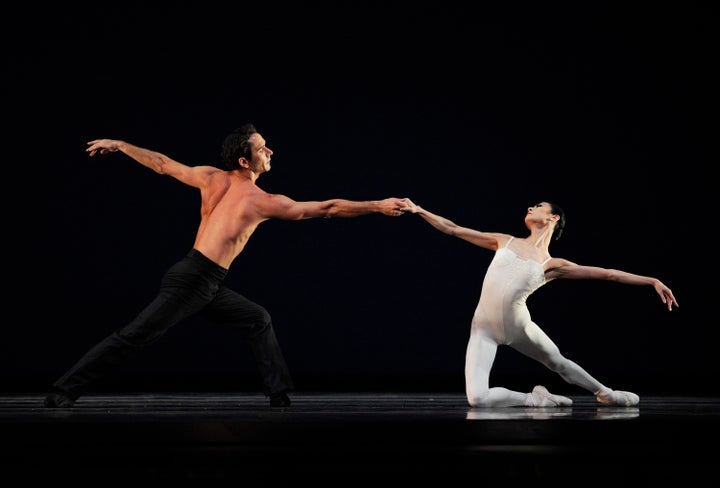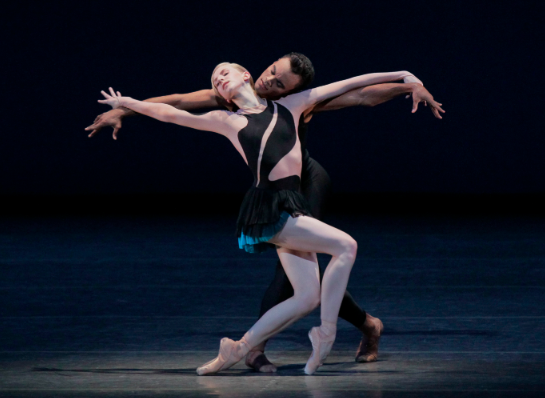
Ballet galas can be disheartening affairs -- miscellaneous collections of orphaned pas de deux, presented with little concern for programming beyond projecting the least interesting, "ta-da" aspects of ballet to the (not actually) cheap seats in the back. But New York City Ballet tends to be more ambitious. At its spring gala last Thursday night, the company gave us two premieres and a re-costumed Balanchine masterpiece. There was a sense of freshness and renewal.
In keeping with that theme, the evening began with a premiere featuring four of NYCB's youngest talents. Peter Martins' Mes Oiseaux is, unfortunately, both slight and overwrought: Ashly Isaacs, Claire Kretzschmar and Lauren Lovette, who might be muses, sirens or furies, torment Taylor Stanley in a series of busy, technically fiendish solos and duets. But however unclear we are about what the choreography is saying, these dancers know how to say it. None of them have been in the company for more than two years; all of them are going to be stars. Stanley in particular enthralled with his refined musicality, subtly shading Marc-Andre Dalbavie's dizzy score. He's at once virile and vulnerable, a prince and a poet.

Claire Kretzschmar and Taylor Stanley in Mes Oiseaux, costumed by Gilles Mendel. Photo by Paul Kolnik.
Mes Oiseaux's cast promises to bloom soon. The stars of Benjamin Millepied's newest ballet, Tiler Peck and Tyler Angle, are in full flower. And Millepied gave them an uncharacteristically romantic showcase in Two Hearts, set to a new score by frequent collaborator Nico Muhly.
Millepied has a sophisticated sense of form and structure, of how to manipulate large groups and create duets of engrossing complexity. But most of his older works seem dry and cool, driven only by a compulsive need for order and logic. Two Hearts, on the other hand, has a warm, tender center in its various pas de deux for Peck and Angle, echoed and refracted through the 12 members of its corps de ballet. It's the story of two people as embodied by 14. The gentle folk accents in Muhly's luminous score add to the sense of pastoral community (though Rodarte's jarringly graphic black-and-white costumes would place it at a 1940s beach party).
Peck and Angle are rich, full dancers, and as Millepied's love story turns vaguely tragic, they make it feel epically so. Their final duet is full of half-lifts and almost-theres, a whispered, broken conversation that as danced by these two says more than a virtuosic screaming match. It ends with Angle sitting on the floor and Peck reclining against him, his arm encircling her waist. They look at peace, but we know better.
Balanchine's Symphony in C is a gorgeous, giddy closer, with its infectiously danceable Bizet score and show-stopping sequences of fleet petit allegro. Yes, the corps de ballet looked ragged; yes, the new costumes are violently, distractingly glittery. But Symphony in C is carried by its four ballerinas, and Thursday's cast was more than equal to its formidable challenges.
You never need to worry about Megan Fairchild (in the first movement), Ashley Bouder (in the third) and Peck (in the fourth). They're always rock-solid, firmly in control of their bodies, to the fingertips. Sara Mearns, in the second movement's haunting adagio, is wilder, less certain. But she commands the stage like no other ballerina. Good dancers hum with electricity; Mearns alters the atmosphere's electrical charge.